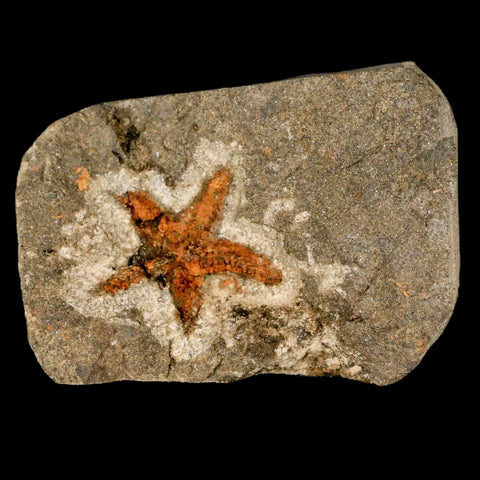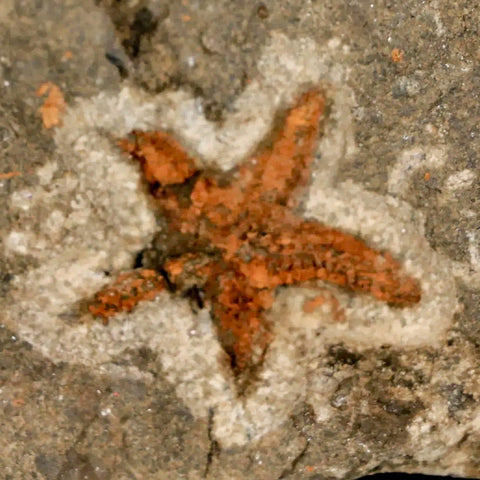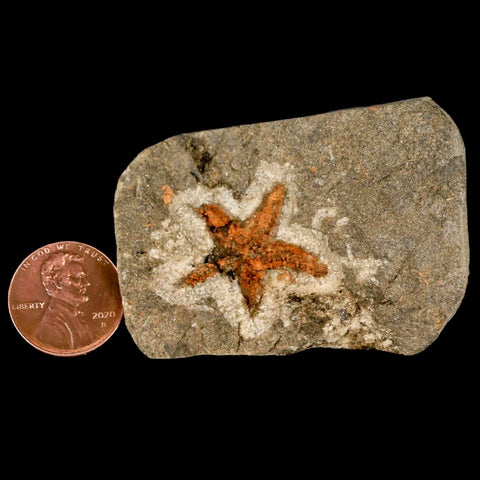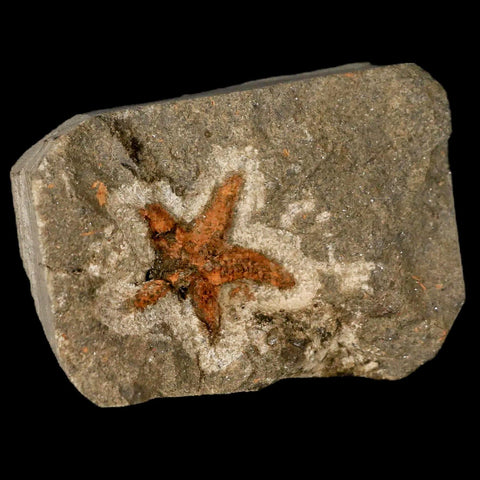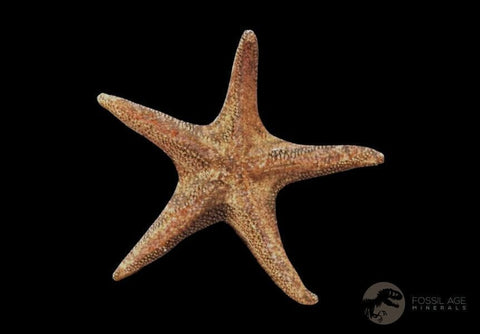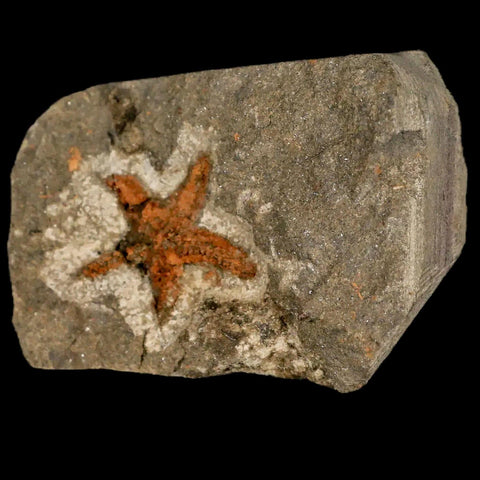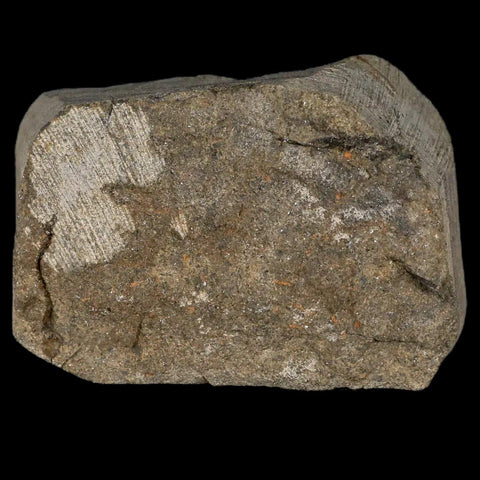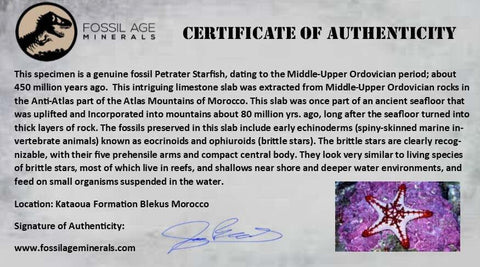22MM Brittle Star Petraster Starfish Fossil Ordovician Age Blekus Morocco COA
Location: Kataoua Formation, Blekus, Morocco
Weight: 2.7 Ounces
Starfish Dimensions: 22MM
Dimension: 2.2 Inches Long, 1.5 Inches Wide, 0.9 Inches Thick (Plate)
Comes with a Certificate of Authenticity.
The item pictured is the one you will receive.
Brittlestar Petraster
This noteworthy limestone slab was recovered from Middle-Upper Ordovician strata, dating to approximately 450 million years ago, within the Anti-Atlas section of Morocco’s Atlas Mountains. Originally deposited as part of an ancient seafloor, it underwent tectonic uplift and was integrated into mountainous formations around 80 million years ago, well after sediment lithification. The slab contains well-preserved fossils of early echinoderms, including echinoids and ophiuroids (brittle stars). The brittle stars are identifiable by their five articulated arms and centralized disc, bearing strong morphological resemblance to extant ophiuroids inhabiting reef and shallow marine environments, where they feed on planktonic organisms. Also present are eocrinoids, likely Ascocystites, characterized by elongate, tapering stalks and crown-like arm clusters used in suspension feeding. Despite their name, eocrinoids are phylogenetically distinct from crinoids, exhibiting unique structural traits; nevertheless, their stalk morphology facilitated substrate attachment and elevation above the benthic zone, akin to crinoids.
There appear to be several larger individuals along with several much smaller ones. Those smaller animals may be juveniles of the larger form or a different species. Do you notice how the smaller individuals often seem to be in close contact with the brittle stars? We are often led to wonder whether the brittle stars were feeding on the smaller echinoids.

Please be aware of the nature of fossils:
Being buried under the ground for millions of years under tons of pressure tends to be rough. No fossil comes out of the ground whole and perfect. Most fossils have undergone some restoration, while others are altered by man simply to enhance their presentation in different ways. The workers in Morocco do a very professional job of unearthing and preserving these natural treasures. These are part of the natural beauty of the fossil and are not considered defects.


